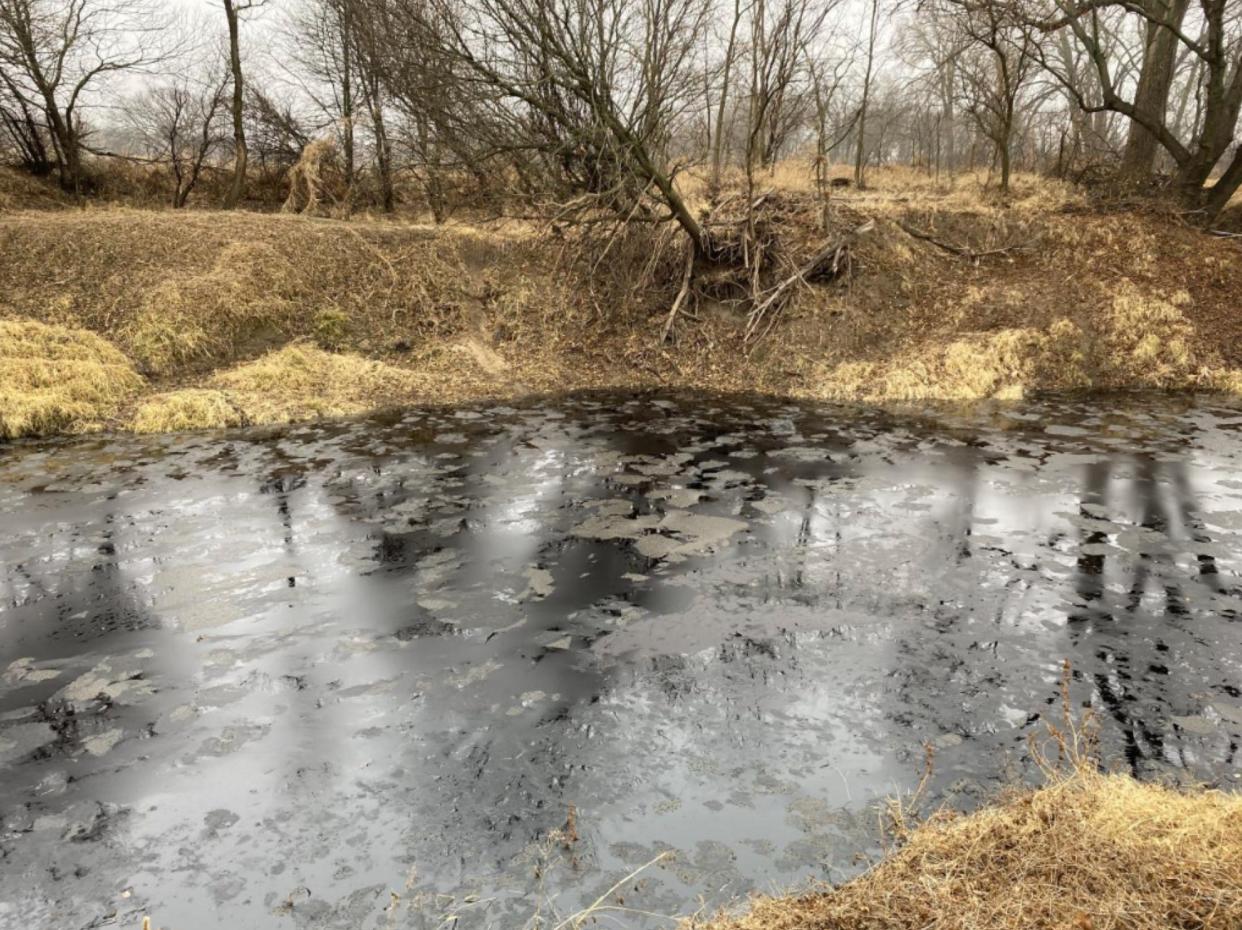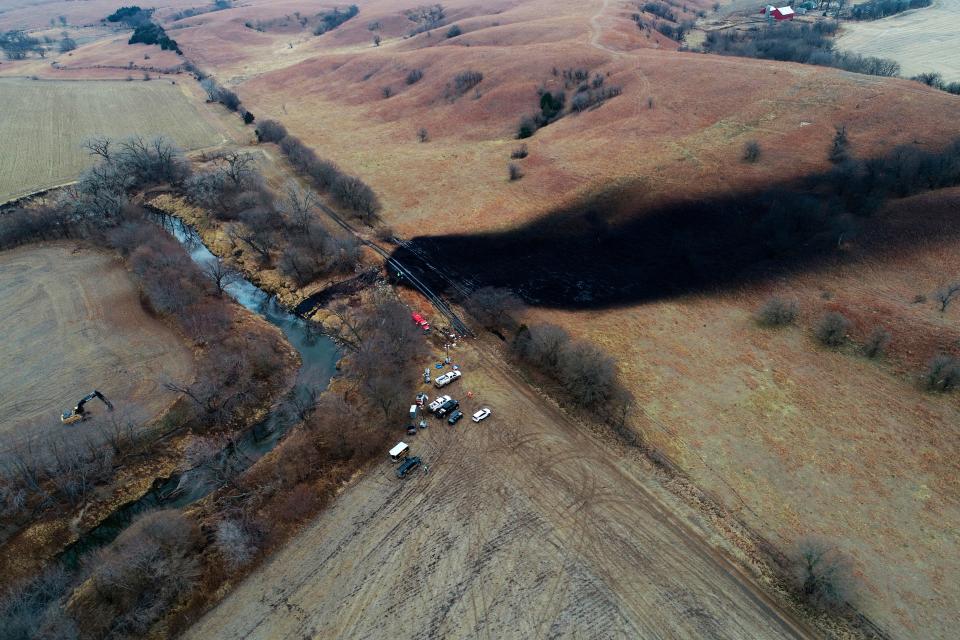Company restarts Keystone portion affected by Kansas oil spill. The cause remains unknown.

The operator of the Keystone pipeline said Thursday they have re-opened the portion of the pipeline affected by a Dec. 7 oil spill, despite its cause remaining unknown.
TC Energy announced they had conducted the requisite testing to proceed with a controlled restart of the pipeline segment that flows from Cushing, Neb., through north-central Kansas.
That is the portion of the pipeline that failed in early December, causing 14,000 barrels of crude oil to flow into Mill Creek outside Washington, equivalent to more than 500,000 gallons, or about the size of a water tower.
Shortly after the spill, Pipeline and Hazardous Materials Safety Administration of the U.S. Transportation Department ordered operations on the 96-mile segment be halted until actions had been taken to address public health and environmental concerns.
More:As pipeline operator searches for cause of Kansas oil spill, residents await cleanup

TC Energy said the pipeline will operate at a significantly reduced pressure for the time being, as required by federal regulators. A 2017 exemption allows the Canadian company to run oil through that segment of the pipeline at a higher pressure than initially authorized, though the incident has led to calls for that flexibility to be revoked.
The company didn't immediately provide a copy of a plan required to be filed with regulators before restarting operations. PHMSA directed The Capital-Journal to file a request for the document under the Freedom of Information Act, which it has done.
"We maintain our commitment to our ongoing safety-led response and will fully remediate the incident site," TC Energy said in a statement. "We will share the learnings from the investigation as they become available."
Indeed, the cause of the spill remains unclear, and there is no timeframe on when those details might be made public. The spill is the largest in the history of the Keystone pipeline system, the largest onshore oil spill in nine years and likely the largest of its kind in Kansas history.
"Quite frankly, the fact that they're putting oil back through there without knowing or disclosing what the original problem was, why'd we had the rupture in the first place, is a little bit of a concern," said Bill Pannbacker, a farmer and stockman whose land was affected by the spill.
One of Pannbacker's grazing pastures was heavily impacted by the spill, but details of what comes next have been scant. He was told at one point that soil was to be taken to Russell County for testing but has not heard either from the Environmental Protection Agency or the Kansas Department of Health and Environment.
"What the timeline is or the procedures for regeneration of the pasture, I mean, we just haven't seen it," he said.
The type of crude oil carried by the pipeline is particularly difficult to clean, though TC Energy has maintained since the spill that drinking water wasn't affected and that the spill was contained by a dam four miles from the spill site.
More:The Kansas Keystone pipeline spill isn't an ordinary oil spill. Here's why.
The Kansas Department of Health and Environment, however, has said some chemicals were found downstream of the dam, a spokesperson told the Kansas News Service, and that the levels were within safe levels of consumption for humans but not animals.
As of mid-December, four deceased mammals had been recovered, as had 71 fish, which were turned over to the Kansas Department of Wildlife and Parks for assessment.
More than 500 workers have been laboring at the spill site in recent weeks. The creek runs through much of north-central Kansas and feeds the Blue River that flows into Tuttle Creek Lake.
The pipeline stretches more than 2,700 miles across North America, carrying oil drawn from the tar sands of Alberta, Canada, to Texas to be refined and then distributed. A separate portion of the pipeline moves oil to a refinery in Illinois.
Environmental activists have long pushed for a limit to oil and gas infrastructure on public lands. And the proposed extension of the pipeline, dubbed Keystone XL, has long prompted debate and protest. Its approval was halted by President Joe Biden shortly after taking office, despite efforts by former President Donald Trump to allow it to proceed.
This article originally appeared on Topeka Capital-Journal: Keystone pipeline segment affected by Kansas oil spill to re-open

